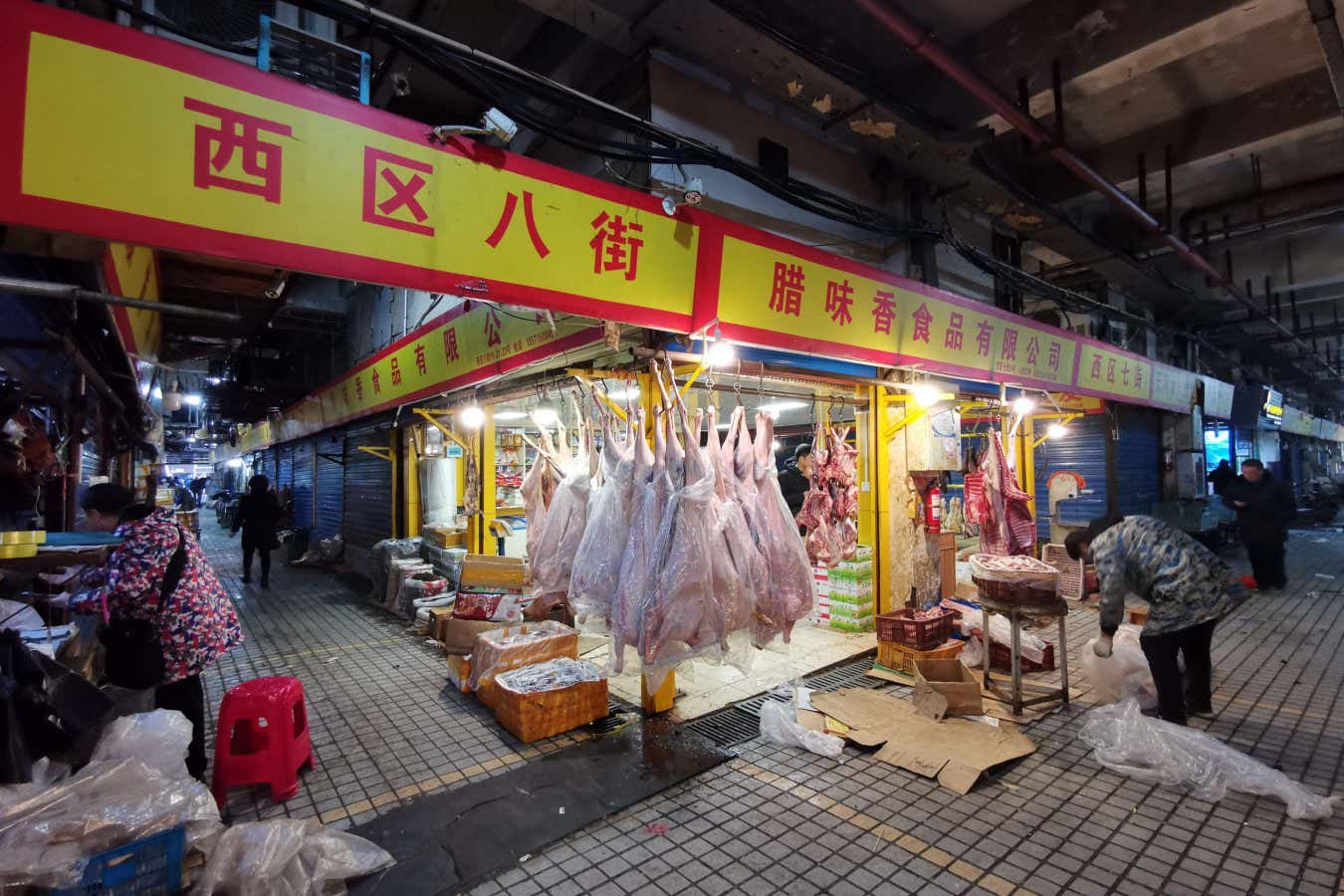Huanan Seafood Market in Wuhan, China, on December 31, 2019
Imaginechina Limited/Alamy
An analysis of genetic samples taken from the Huanan seafood market in Wuhan, China, has identified a list of wild animals sold there that were the most likely source of the virus that sparked the covid-19 pandemic.
While bats are thought to have been the original carrier of the SARS-CoV-2 virus, it was first proposed that an intermediate wild species was infected and brought to the market, where an outbreak in humans began. Stalls sold live animals and seafood.
An alternative suggestion is that the virus escaped from the Wuhan Institute of Virology, where staff were known to study bat coronaviruses, but not SARS-CoV-2.
However, a new study by an international team concludes that it is more likely that the virus emerged from wild animals sold on the market and not from a laboratory leak. The researchers reanalyzed data from 800 samples collected in Huanan market by the Chinese Center for Disease Control and Prevention starting January 1, 2020, and also studied the viral genomes from the first cases of covid-19.
Member of the team Ed Holmes at the University of Sydney says Chinese researchers have swabbed surfaces, freezers, drains and cages to test for the presence of SARS-CoV-2.
“We analyzed this data to determine which species were present and where they were found in the market, particularly in relation to where SARS-CoV-2 was found,” says Holmes.
Contrary to some claims made by Chinese researchers, the team found evidence for a variety of wild animals sold on the market that could be an intermediate host for the virus, including common raccoon dogs (Nyctereutes procyonoides), masked palm owls (Paguma larvata) and hoary bamboo rats (Rhizomys pruinosus).
It is important that the traces of these animals were found in exactly the same stables of SARS-CoV-2, says Holmes. “This suggests – but does not prove – that the animals were infected. Therefore, it is very likely that SARS-CoV-2 emerged in a live animal market.
“All the scientific data points one way – to the natural zoonotic origin of SARS-CoV-2 in the Huanan market, Wuhan,” says Holmes.
Genetic studies of the virus in the first cases of covid-19 revealed that few, if any, people were infected before the market outbreak, the team reports. However, he could not rule out the possibility that the virus was brought to the market by an infected person handling animals.
Member of the team Zach Hensel at NOVA University Lisbon, Portugal, says the study highlights the preventable risks posed by the human-wildlife interface in the Huanan market, and the need to mitigate these risks in similar places.
“Although humans were, of course, everywhere in the Huanan market and live mammals were concentrated in a small number of stalls, human viruses, other than SARS2, were rare and many animal viruses were quite abundant Hensel says.
“This included an influenza virus with potential for zoonotic spillover and an animal virus closely related to others that had caused devastating animal outbreaks.”
Hensel says simple personal protective equipment that was recommended for such settings before the covid-19 outbreak could have prevented the entire pandemic.
Robert Edwards at Flinders University in Adelaide, Australia, who was not involved in the research, says a “dream team of evolutionary biologists” conducted the latest study.
“There is little doubt about the origins of SARS-CoV-2 coming from the wet market now,” says Edwards. “The authors discuss humans causing the infection in the market, but any other origin story must explain how it was only the market that was the source of so many outbreaks.”
Themes:
